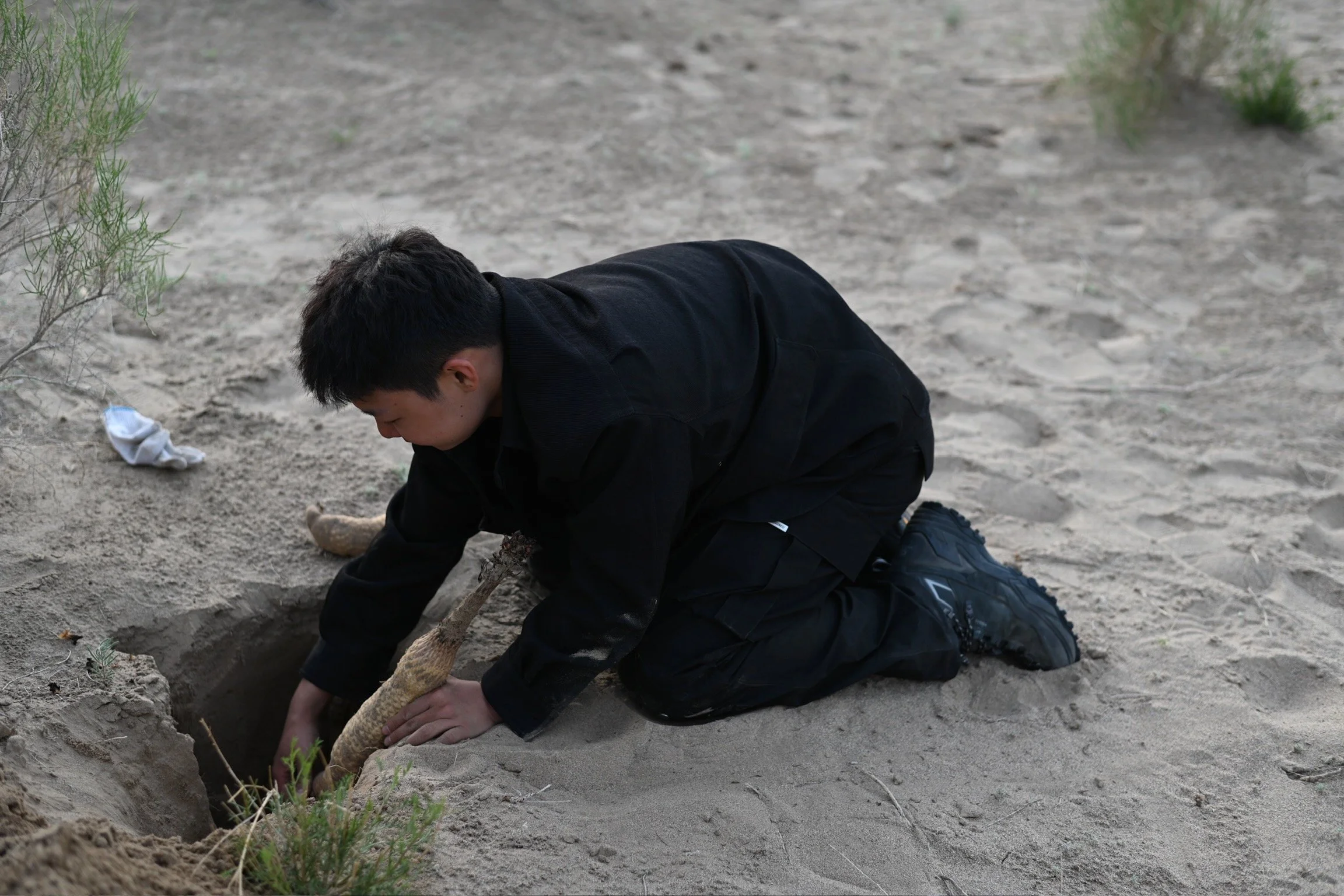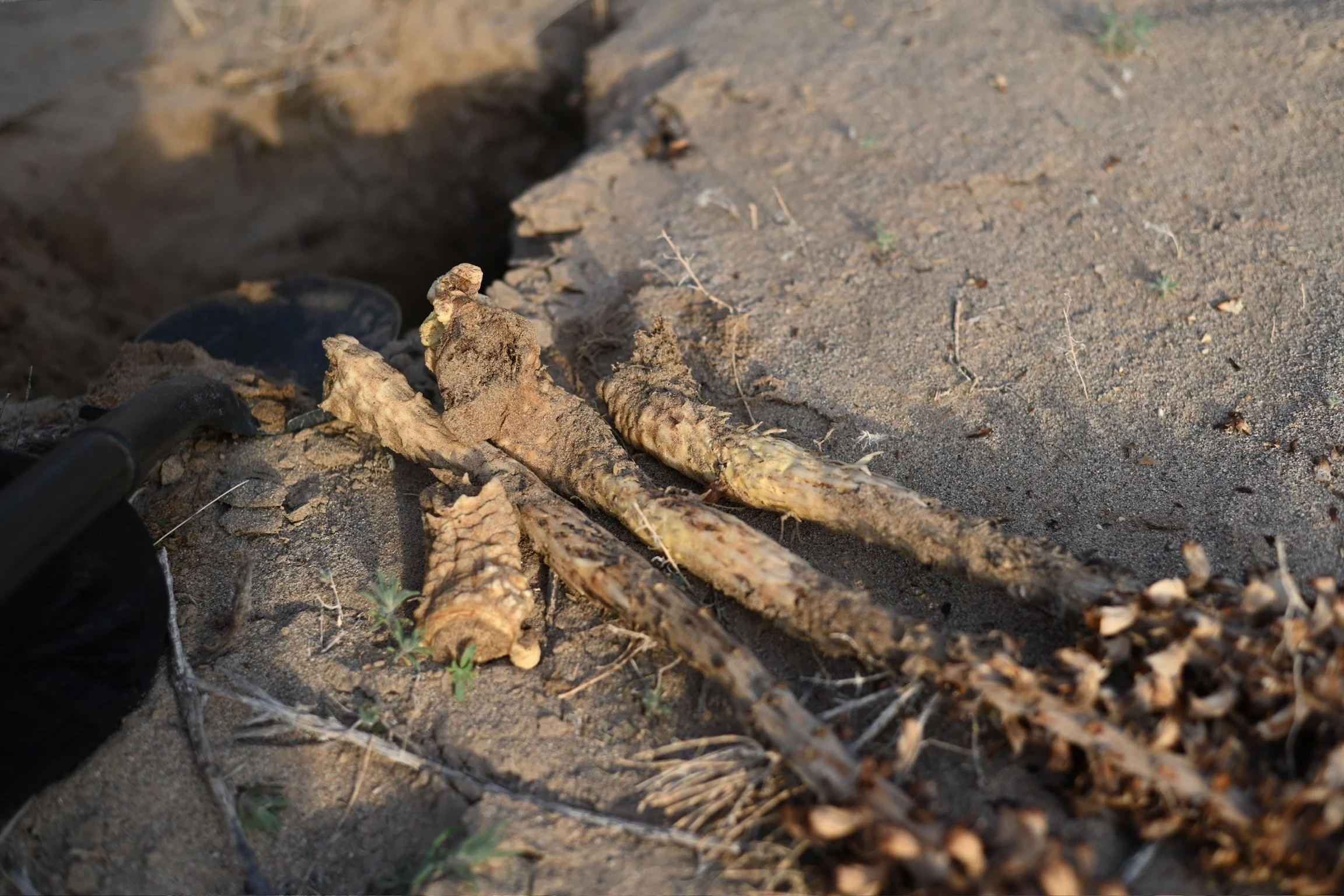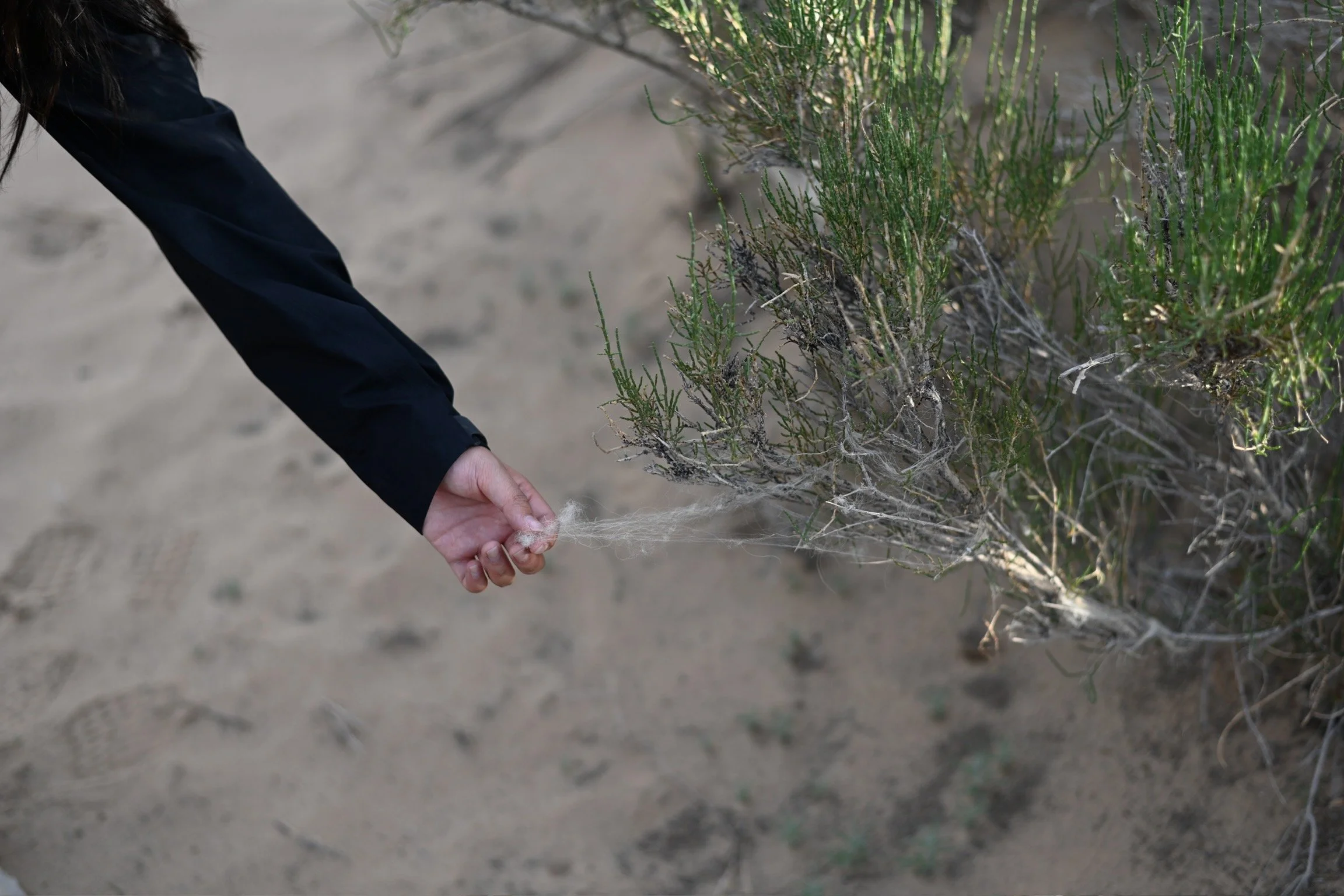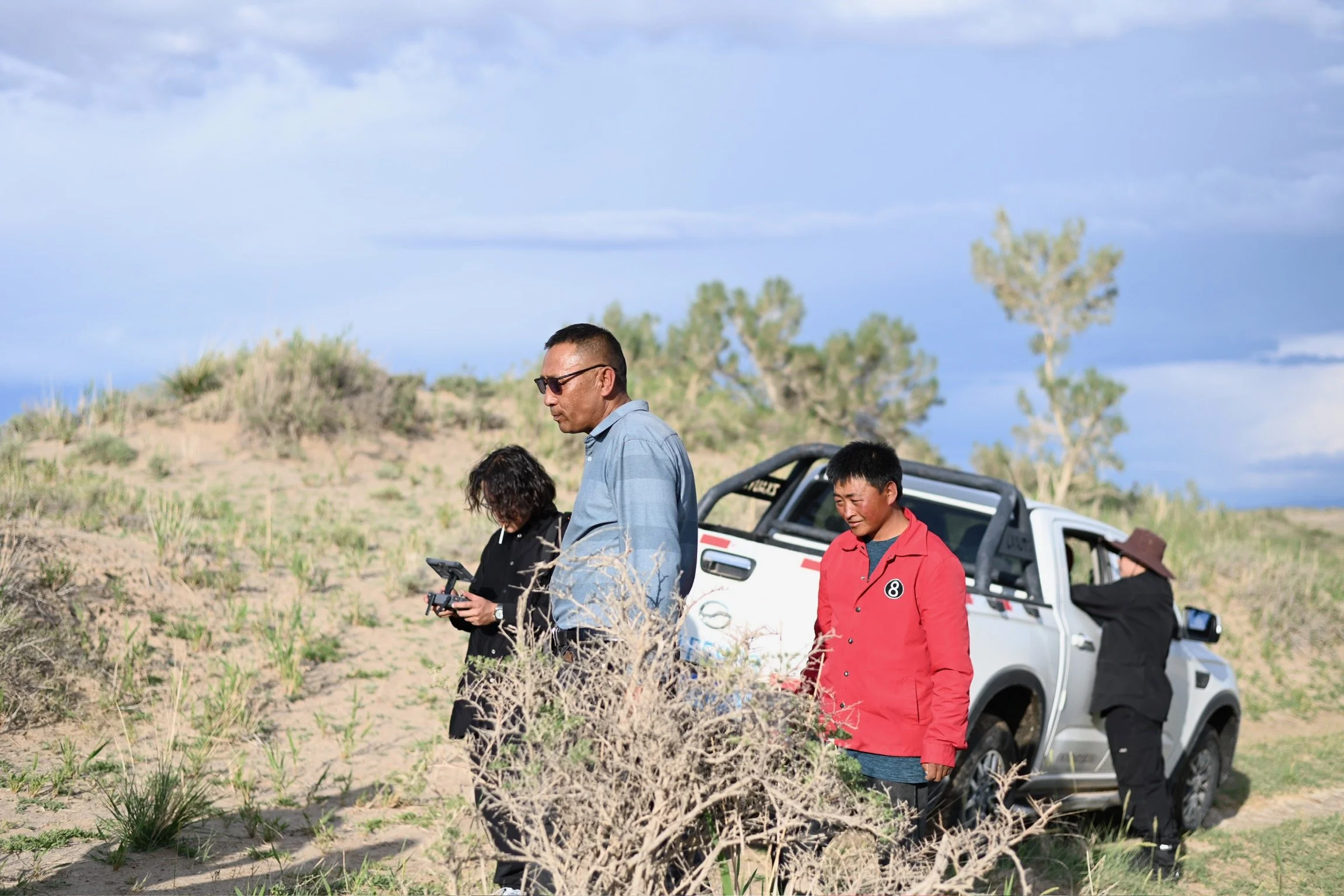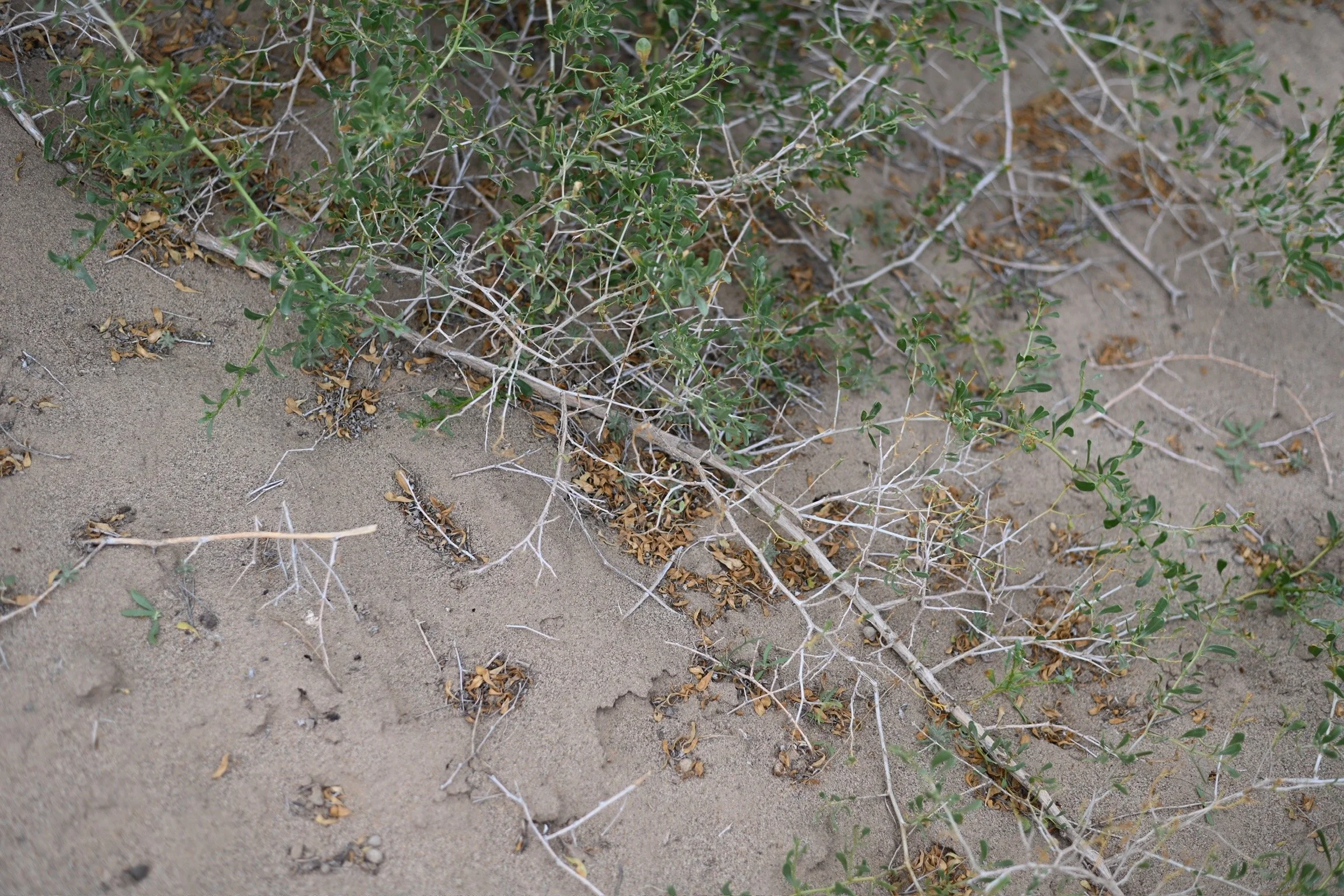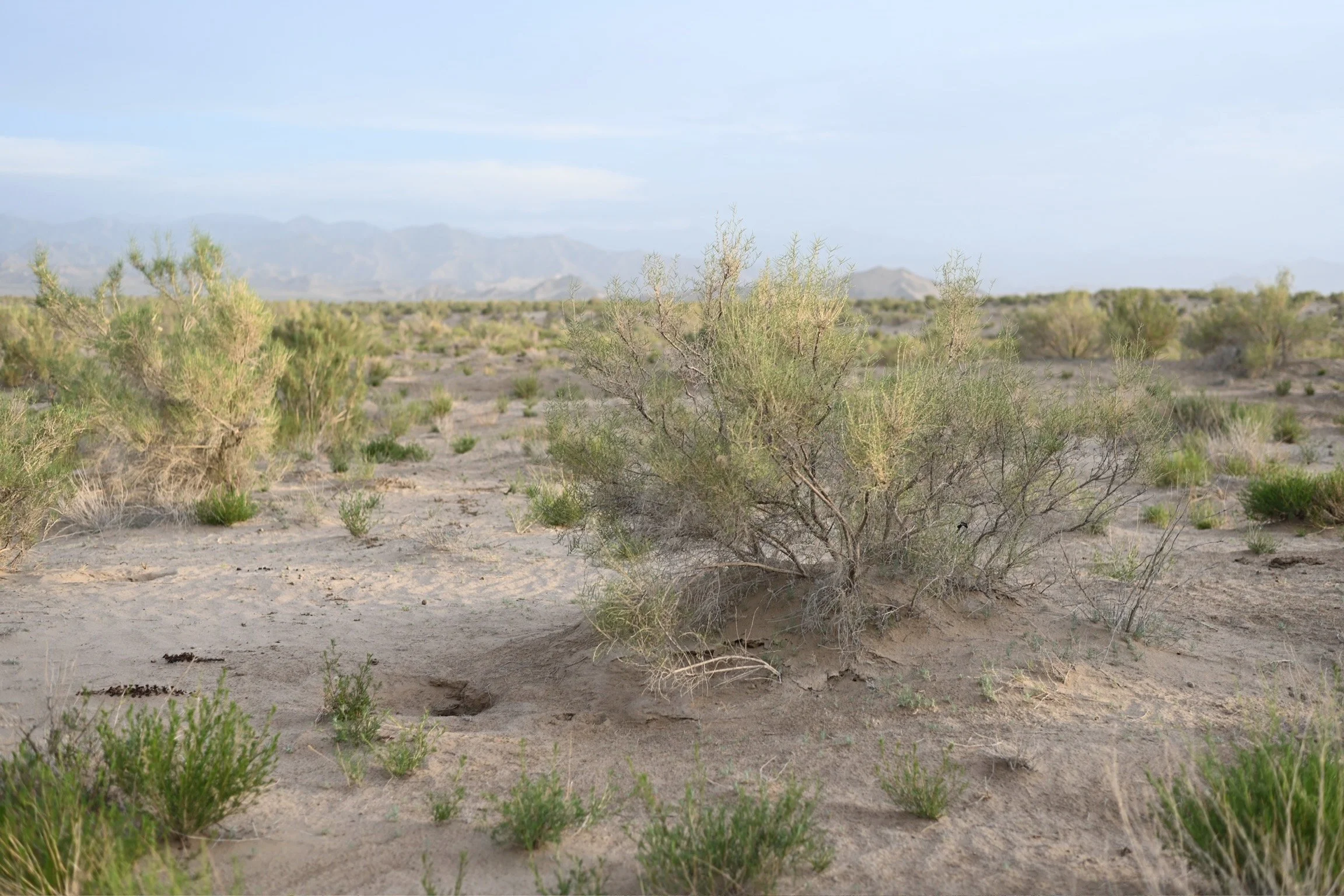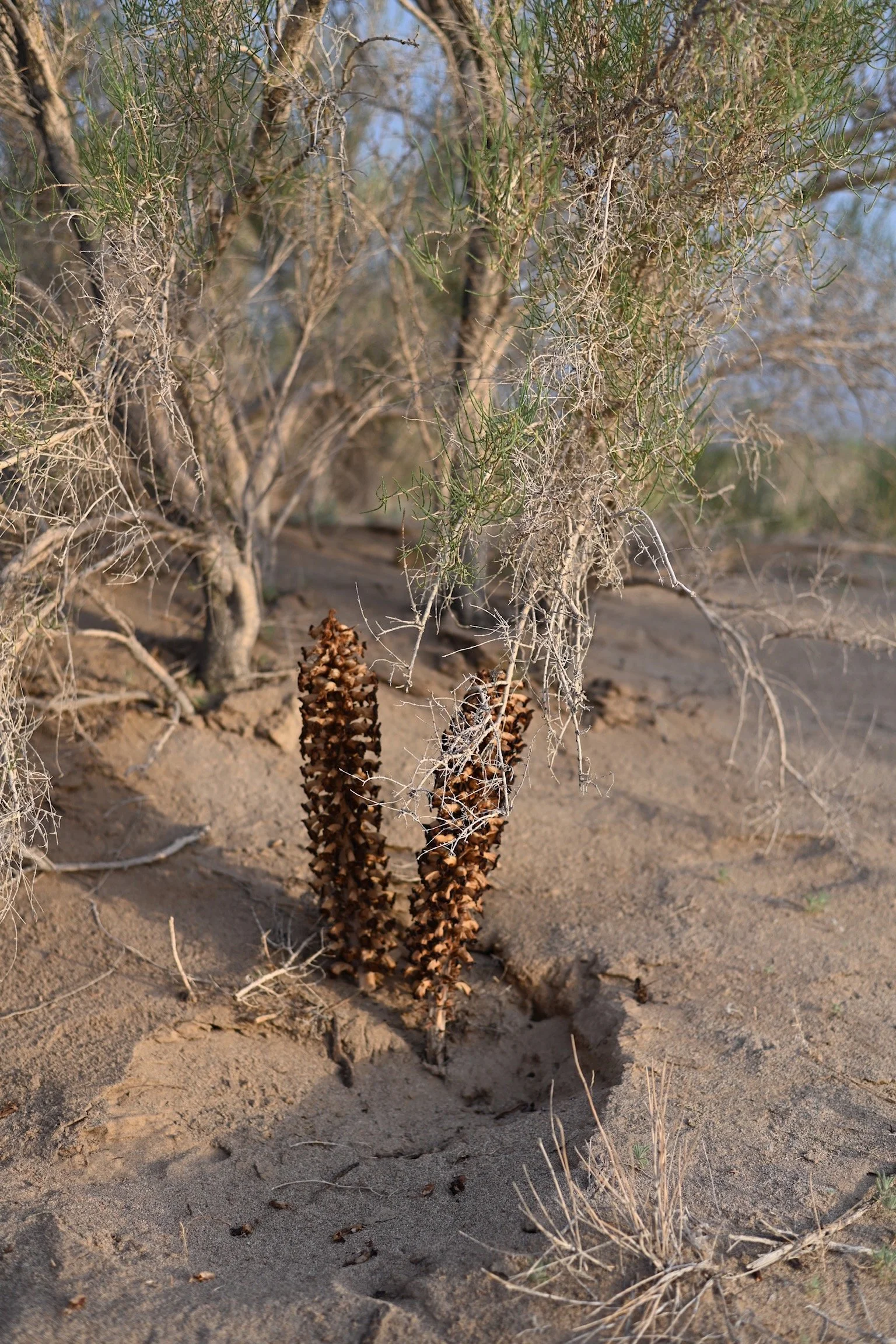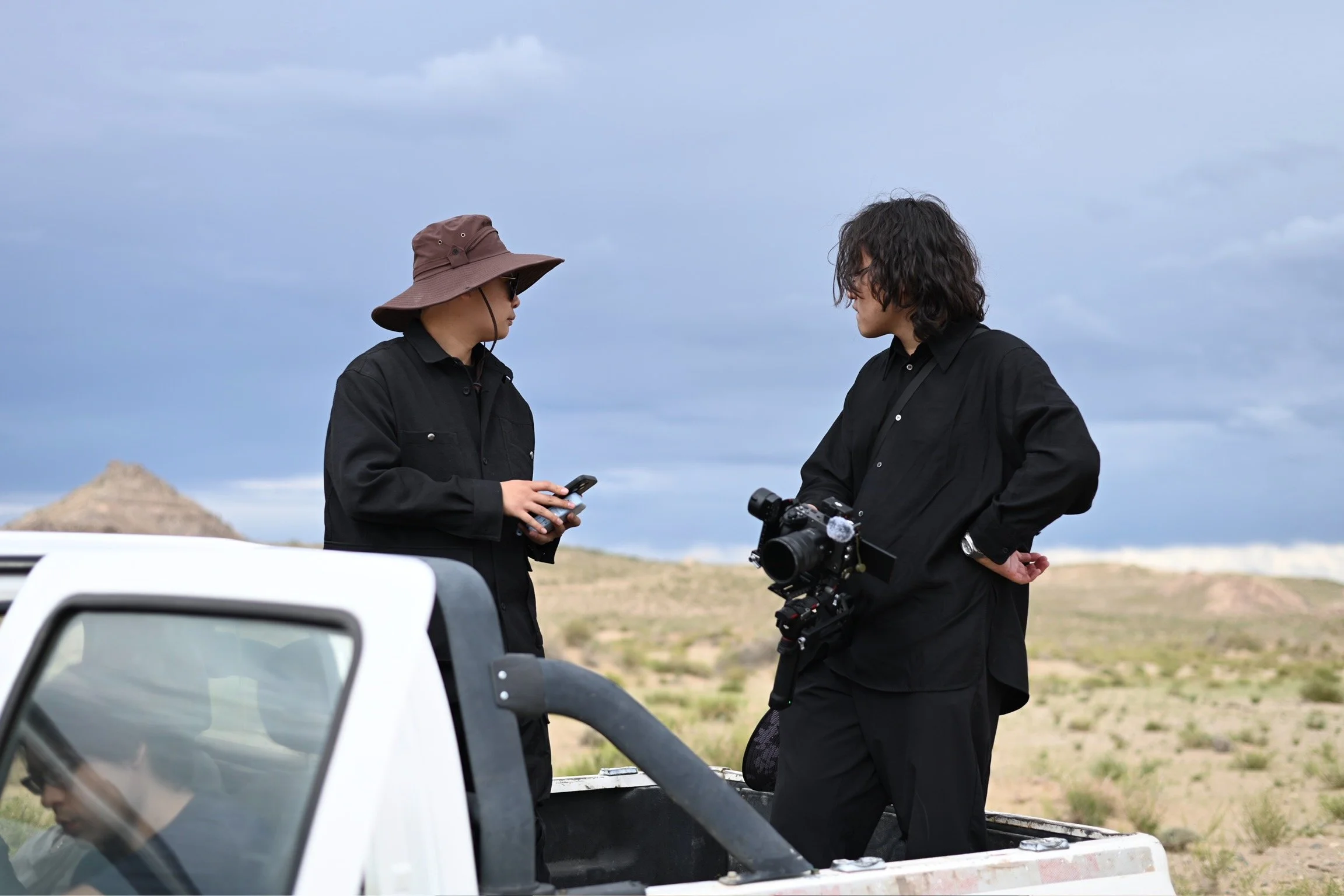Into the Desert: Harvesting Cistanche and Tracing the Return of Life
Under the scorching summer sun, the ResilienSEED team joined local harvesters deep in the dunes of the Qinghai desert. This wasn’t just any walk into the wild—it was the start of Cistanche harvesting season, a fleeting window each year when this rare desert plant emerges from beneath the sands, clinging to the roots of the Saxaul tree.
What is Cistanche?
Cistanche (肉苁蓉), often referred to as the “ginseng of the desert,” is a parasitic medicinal plant that grows by attaching itself to the roots of drought-resistant trees like Saxaul (Haloxylon ammodendron). Long used in traditional Chinese medicine, it is valued for its properties in boosting immunity, enhancing vitality, and improving kidney function.
Its growth depends entirely on the health of the host plant and the surrounding environment, making it an indicator species for ecosystem resilience.
The Fieldwork Experience
Our team spent the day side by side with local harvesters—digging carefully in the sand, tracking the growth of Saxaul, and identifying signs of active Cistanche roots. It's a process that demands both knowledge and patience.
In the first image, one of our team members uncovers a mature Cistanche buried beneath the sand, its distinct segmented texture rich with years of nutrient absorption.The second l image shows the full harvest: long, golden-brown stems still clinging to desert soil.
A Sign of Return: Camel Hair on Saxaul
One of the most surprising and moving moments of our journey came when we spotted camel hair caught in the branches of a Saxaul shrub (see above photo). This small discovery carried powerful meaning: animals are beginning to return to the region, a sign that ecological restoration efforts may be taking root.
The return of wildlife, even in subtle traces like this, is a reminder that restoration is not just about planting trees, it’s about rebuilding an entire ecosystem.
Looking Ahead: From Field to Film
This fieldwork isn't just scientific—it’s also deeply human. It connects ecological knowledge with local livelihoods, and reminds us that regeneration is possible, one root system at a time.
To share this story with the world, we are filming a documentary on ecological restoration in the desert, capturing not only the science but the people, traditions, and resilience behind these efforts. Stay tuned for behind-the-scenes updates and the upcoming release of our film.

